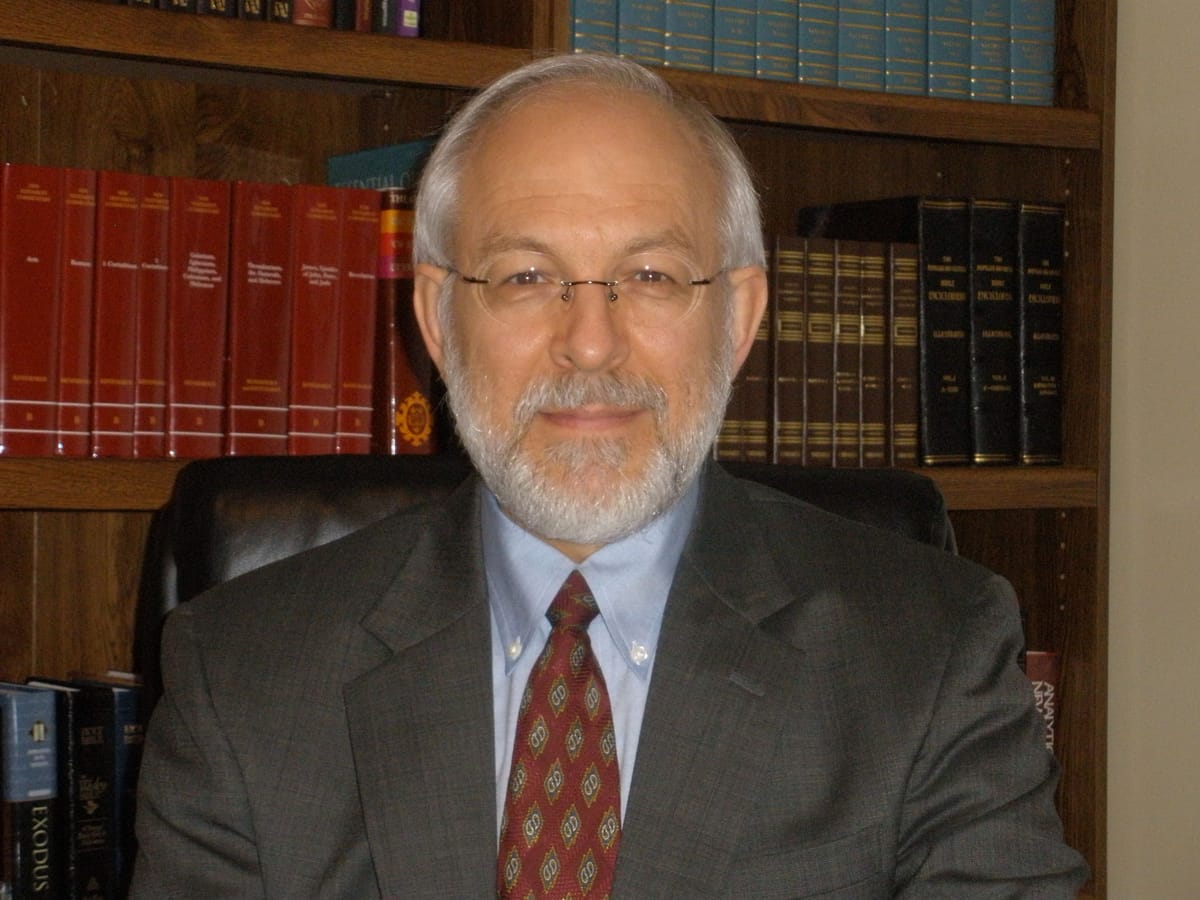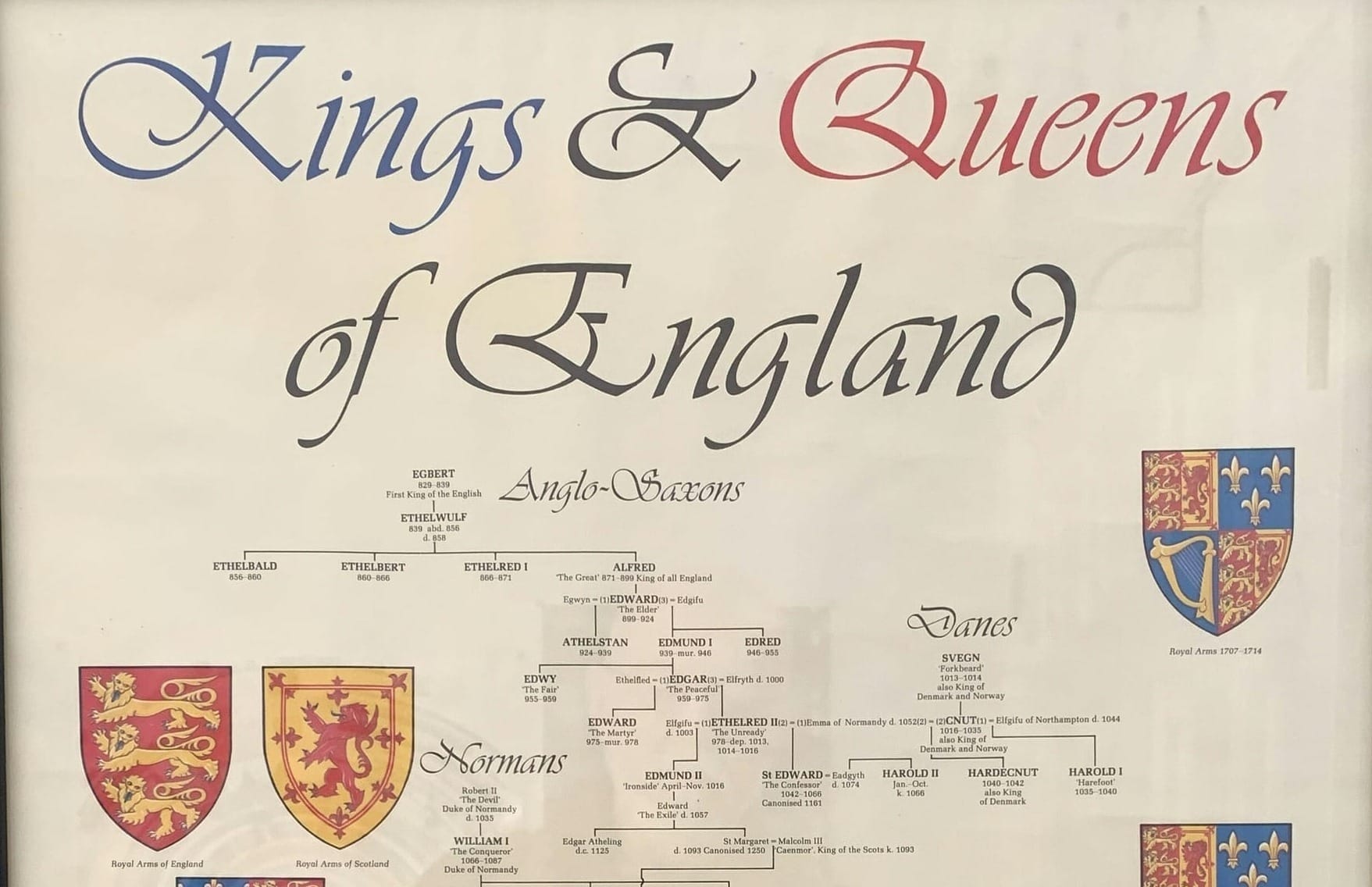Along with our own commentary, here below is the final installment of the British lady Isabel Hill Elder’s essay. It was probably written in the mid-20th century. (The little booklet in our possession is worn and old but contains no date of publication or copyright whatsoever.)
In this blog, all emphases and comments in [brackets] are mine. Additionally, we have spelled out the full names of her biblical references and changed the chapter numbers from Roman numerals to Arabic numerals. We have also shortened many of her lengthy paragraphs to make them more readable for the tiny and narrow screens of some of our modern digital devices. QUOTE:
Gradually a quarrel grew up between the Lombards and the papacy, because, apart from political reasons, the Lombards were a free plain-speaking people, living by their own laws, disbelieving witchcraft, and doing next to nothing for monasticism, and also because, like all their race, they despised the Romans, as comprehending everything that was ignoble, avaricious, luxurious and false, to them, in short, every vice.
And the Popes dreaded lest the Lombards should become masters of all Italy; and they dreaded too, the loss of trade in relics, for the people had begun to question the virtue of the relics and whether the bones really did work miracles.
Then came the storm, and the lie punished itself as all lies do, for their God-trained intellect began to look into His word, and out on the great universe of facts, and by His grace the Lombards were emancipated from the thralldom of Babylonian sorceries.
The Lombard Church retained its ecclesiastical independence of the papacy longer, perhaps, than any other. Its members were known as "The Reformed."
Milan and Genoa were the Lombard capitals, both said to be then more English than any other cities in Italy.
Many traces of Levi, i.e. the Lombards, are yet to be found in Italy. "Travellers are astonished to find in an old Church in Piazzi Bianchi, Genoa, in a niche near the Altar, a very old white marble statue of Aaron, the first High Priest of Israel, full sized and very well executed.
There he stands blessing the people with outstretched hands and uplifted eyes, dressed in full pontificials, the mitre and plate on his head, the curious girdle about his waist, its ends tipped with singular ornaments, the ephod, and the bells and the pomegranates on the edge of his robe, and on his breast, the pectoral containing the twelve stones, actually with the twelve Zodiac signs.
Also in the Church of St. Ambrose, Milan, is seen upon a high pillar of a round form, a brazen serpent like that erected by Moses in the wilderness and commanded by God Himself to be made." (Lassels Voyage of Italy).
That the Lombards were Levites receives indirect support from the frequent use of pavements in the Lombardic armorial bearings. The Levites who had charge of the Temple, being at times designers of it would, not unnaturally, take some portion as a distinguishing badge and they would be likely to choose the pavements upon which they so often trod, whereon they ministered, and which would be so familiar to them.
As elsewhere, these would be in marble slabs, some white, others coloured, all would be symbolical. Many old Lombard families bore such pavements on their arms, as Fransoni and other authorities delineate. (Nobilita de Genova).
Among the families mentioned as bearing such arms are the Calvi, a scion of which family was the famous John Calvin who, when persecuted by Rome, was received and protected by an important Lombard lady in her castle at Pau.
Besides the use of Levitical emblems by the Lombardic families in their Coats of Arms, we find the use of Hebrew originals in the Crests and Supporters of many ancient Lombard families and cities.
"The Cherubic representations on the Ark, the Curtains, the Lavers, the Bases etc., were prominent symbolic objects in the Temple. The Cherub was a composite figure of the Lion, Bull, Man and Eagle, symbolical of the four great hosts or armies into which the twelve tribes of Israel were arranged. (Numbers 2; Ezekiel 1:5-14).
Among the Lombards the symbolical figure of the Griffin was common; this is a corruption of the Hebrew Cherub—Gryphon, Griffin, Griffith are all from the Hebrew—In English Cherub." (Col. Gawler, "Dan the Pioneer", p. 27). Genoa, one of the two Lombardic capitals, bore Griffins as supporters.
Italy's Free Cities were centres of industrial art, manufacture, literature and commerce. The patricians or nobles had their family names inscribed in what was called "The Golden Book."
After the melancholy overthrow of the Lombard monarchy, the great cities, for a time, governed themselves; gradually, however, many of the Lombards moved westward, and, arriving in Normandy, identified themselves with the followers of William the Conqueror, and came in his train to Britain in 1066 A.D.; while many of them engaged in the military and maritime service of other countries, and above all in trade and exploration, and so many were employed by other countries as envoys, ambassadors, councillors, commandants, etc., that their title or mode of address—"Excellenza" or "Excellency" has been retained among ourselves for any foreign representative of, or to, our Sovereign.
Perhaps from the time of Amos (B.C. 787) it has continued in use as it evidently was before. (Amos 6:8; 7:7). This was the mode of address used by Luke (the beloved physician, therefore a Levite) in his treatise addressed to Theophilus, and was also the name of the father of Martha, Mary and Lazarus. (Rabanus Maurus M.S.S. in Magdalen College Library, No. 89 in Library Catalogue).
Theophilus, a Syrian prince, held the position of "Governor of the Maritime Country" and consequently much away from home; it is possible, therefore, that this dignitary was the Theophilus addressed by the evangelist Luke.
Among the few great Lombardic or Levitical families left on the continent of Europe the most distinguished is the Grimaldi family, whose head is the Prince of Monaco; his ancestor Grimoald or Grimaldus was King of Lombardy in 680 A.D.
The Lombards who joined and came to these islands with William the Conqueror in 1066 A.D. would find large companies of their Levite brethren who had preceded them over many centuries; they would find, in most of the larger cities, a Lombard Street where banks, goldsmiths and the arts flourished; these pioneers paved the way for a larger contingent to follow.
We can now review the fulfilment of prophecy and those promises which remain to be fulfilled. The gradual deterioration of the House of Levi throughout the history of ancient Israel, as foretold by the Patriarch Levi, with occasional seasons of renunciation of idolatry into which they so readily lapsed, and which brings into high relief, those of the tribe who were faithful to the God of Israel.
These were the watchers of Israel who were unfailing in their warning of both priests and people. The main body of Israel, however, never ceased to have that deep respect for, and obedience to, the sacrosanct tribe of Levi, chosen that "My Covenant might be with Levi."
We have many indications in our nation of the presence of Levi amongst us, the tribe that was divinely destined to be scattered in Israel. There are numerous identifications. In the arms of the United Kingdom, just as the Lion is taken to signify Judah, the Unicorn Ephraim or the people, the Fleur-de-Lis represents the Norman Lombards, thus indicating Levi.
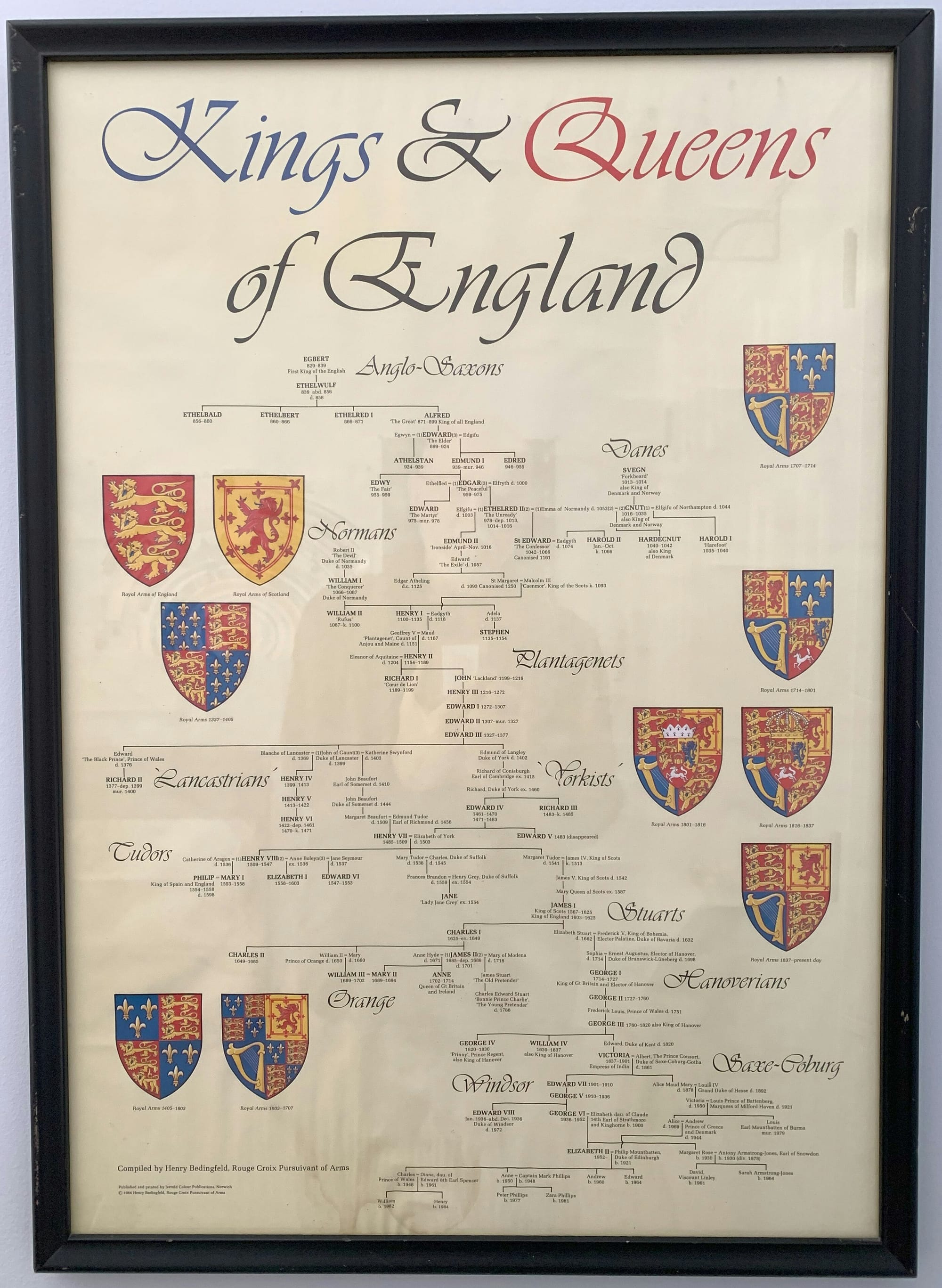
The Trident is the conventionalized flesh fork of the Levitical sacrifices of old, and likewise the emblem "fleur-de-lis" another form of the Levitical fork which the Lombards imported into Normandy, and subsequently brought to these islands, and now well represented on our Royal Coat of Arms.
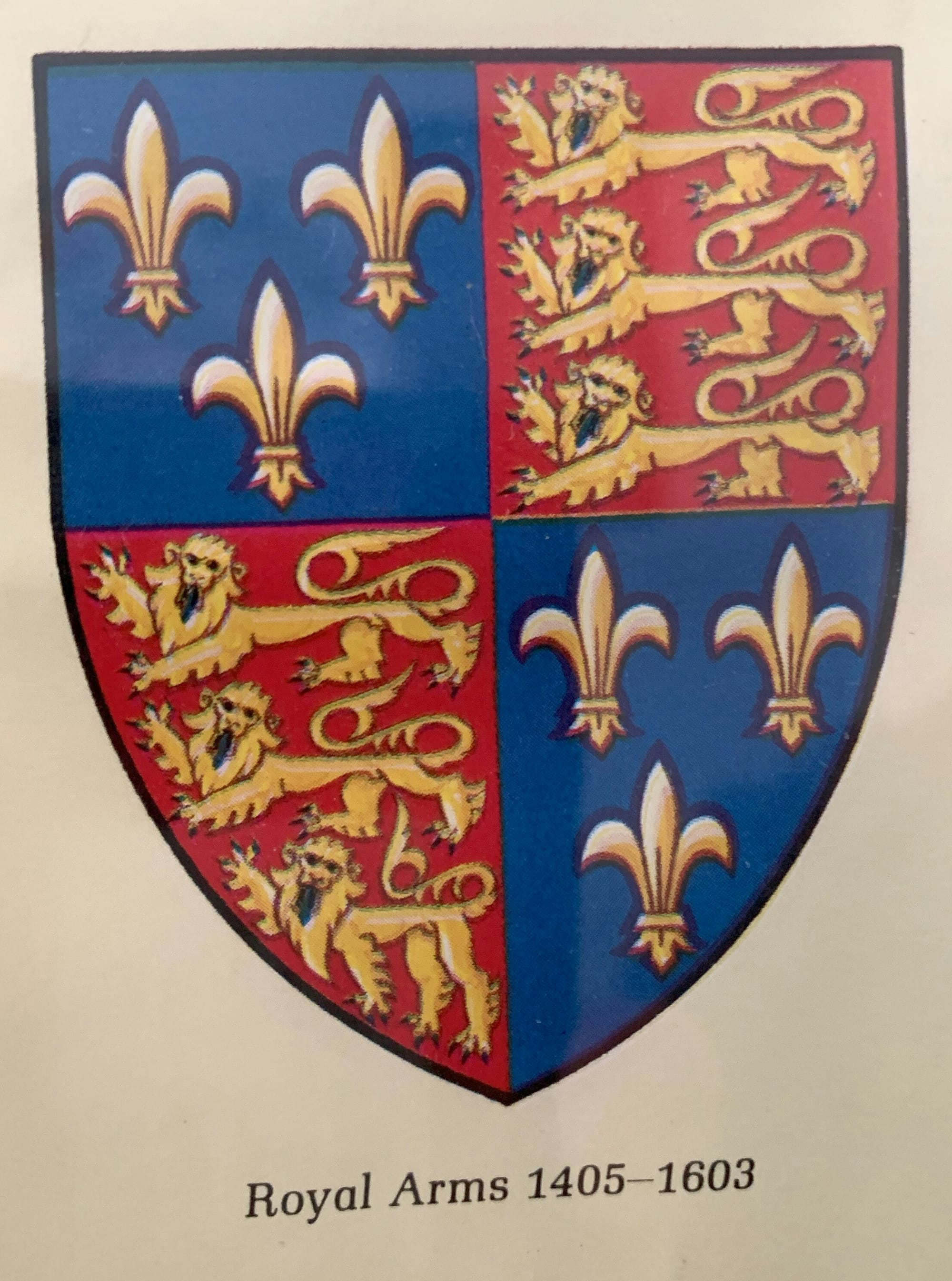
The numeral three has dominated the House of Levi from the birth of their patriarchal head, and is seen in every phase of their history down to the present day. It is seen in the three Feathers of the Prince of Wales, the sign of spiritual and temporal power of the ancient Celtic kings and in the Druidic three rods or rays of light. (Psalm 91).
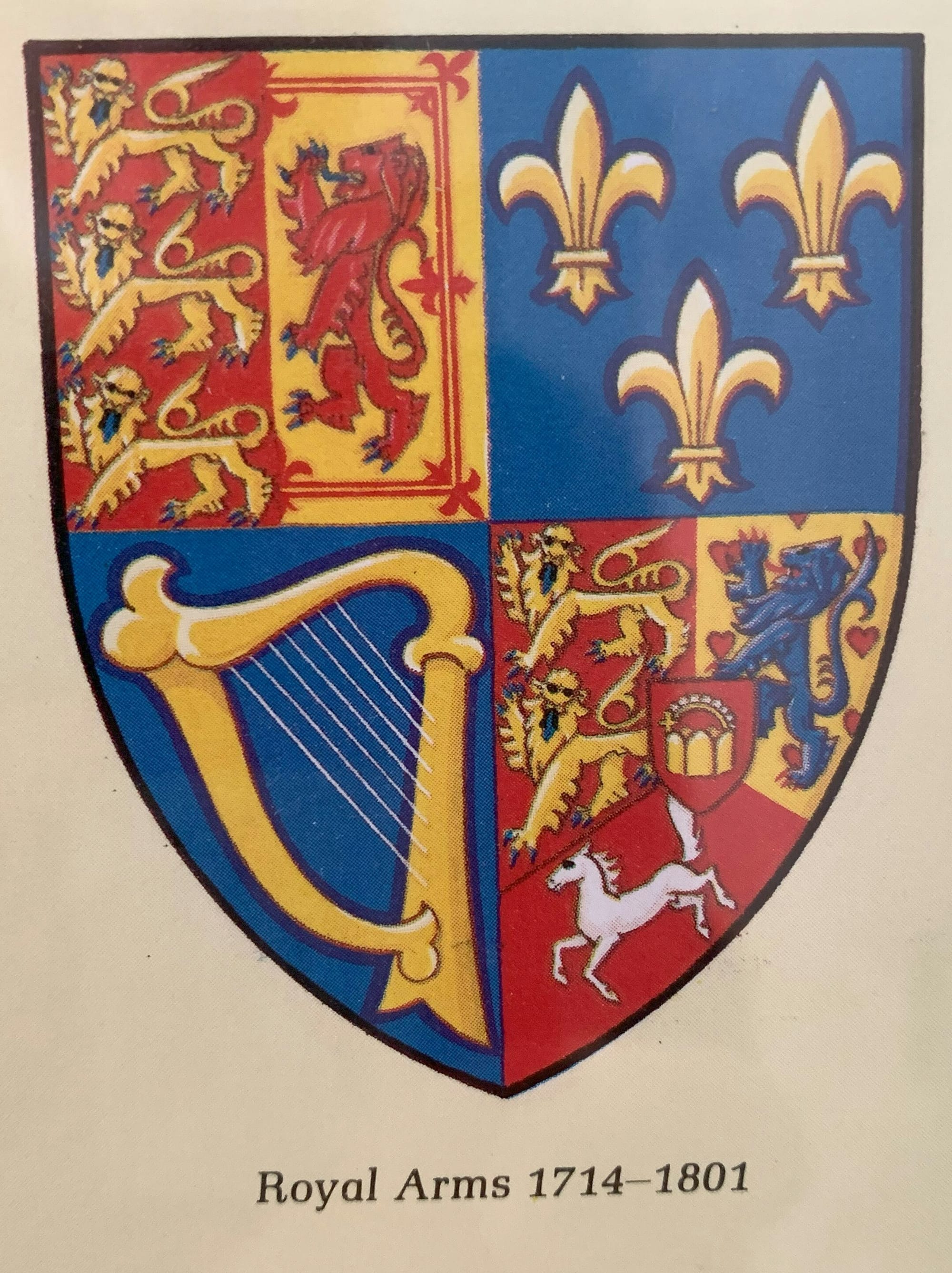
As the Druidic was the Levitical religion with that variation which one would expect to find in a religion practised in two countries so far apart as Palestine and Britain; the earliest Lombards arriving in these islands would find at once their kindred Levites and so would have no difficulty in settling amongst them.
"It can be said of at least many of the House of Levi that they always remained in covenant with God, having rested under the law, until according to promise, Christ came and established the New Covenant and then, as Christians, passed directly under that.
I make no doubt that this was a way-mark in the carrying out of God's covenant with the faithful priest Phinehas (Numbers 25:12), ‘I give unto him my covenant of peace….an everlasting priesthood’, and it would seem that only in this way could it have been carried out." (Landseer Mackenzie, "Monograph of Levi").
The Rechabites, who were Scribes, and therefore Levites, were especially sanctified and honoured and are said to be a community 60,000 strong still dwelling near Mecca in Arabia. (Smith's "Biblical Dictionary"). Perhaps, indeed, the descendants of Phinehas are with these Rechabites.
Maimonides, the distinguished Jewish Rabbi, 1135-1204 A.D., in his "Researches", No. 177, p. 75, states: "A few Levites are among the Jews. The majority are Christians, scattered throughout Europe among the Celtic nations, numbering over 300,000—there is Levite blood in the Christian clergy in Europe—the peculiarities of their Levite ancestors being reproduced."
We have many names which are derived from Levi; the name Lewis is outstanding and means simply Levis. The Rev. Frances Bergmann, a one-time Jew, speaking of the Isle of Lewis, stated that Lewis is the equivalent of Levi.
That there are many of Levi scattered amongst the Anglo-Saxons is patent from their names of which the reader may detect many more than can be enumerated here.
The name Cohen, Hebrew for priest, has many variations amongst us: —Coan, Cowan, MacCowan, Gowan, Macgowan, Coe, Colhoun, Cahoon, Lee, Leigh, Leeman, Leving-stone, Livingstone, Quin, Temple, Scribner, also Griffin and Griffith. Levitical names are, perhaps, more common in Wales, than in the eastern parts of Britain; this may be accounted for by the fact that there was a large settlement of Lombards in the adjacent Pembrokeshire.
From this short survey of the House of Levi it is clear that Levi has an equal place in the disposition of the Chosen People, and at the final "round up" this sacrosanct tribe will have a prominent place in all the blessings promised to the Israel nation.
It might be well to remind ourselves that there is no entrance to the New Jerusalem other than through the gates of Israel—the appointed and God-trained nation to lead the world thereto. (Revelation 22:14).
My Covenant is with Levi.
He shall purify the sons of Levi.
The Psalmist commands (135:20):
"Bless the Lord O house of Israel,
Bless the Lord O house of Aaron,
Bless the Lord O house of Levi,
Bless ye the Lord."
And is not the Aaronic blessing in constant use amongst us: —"The Lord bless thee and keep thee; the Lord make his face shine upon thee and be gracious unto thee; the Lord lift up his countenance upon thee and give thee peace. And they shall put my name upon the children of Israel and I will bless them." (Numbers 6:24-27).
"This people have I formed for myself, they shall shew forth my praise." (Isaiah 43:21).
END QUOTE
END

